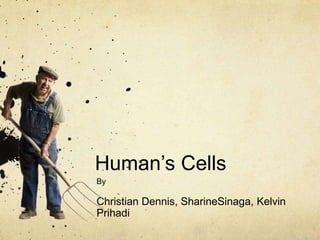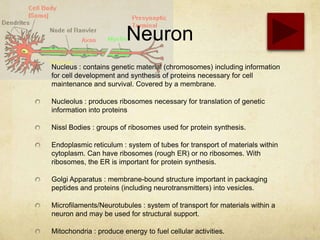The document summarizes the key cells found in major human organs and tissues. It describes the mitochondria, intercalated disks, and T-tubules that give heart cells their unique properties. Liver cells include hepatocytes for protein synthesis and recycling, Kupffer cells which are specialized macrophages, and stellate cells which are part of the nervous system. Skin contains melanocytes for producing melanin pigment, Langerhans cells which interact with the immune system, and Merkel cells in hairless skin. Muscle cells contain myofibrils with actin and myosin filaments that power contraction. Blood contains red blood cells, platelets, and five types of white blood cells - neutrophils, eosinoph



















